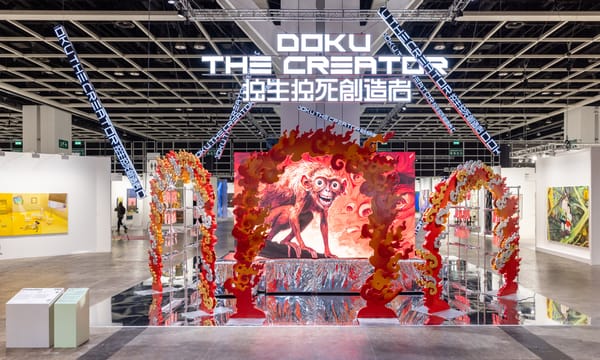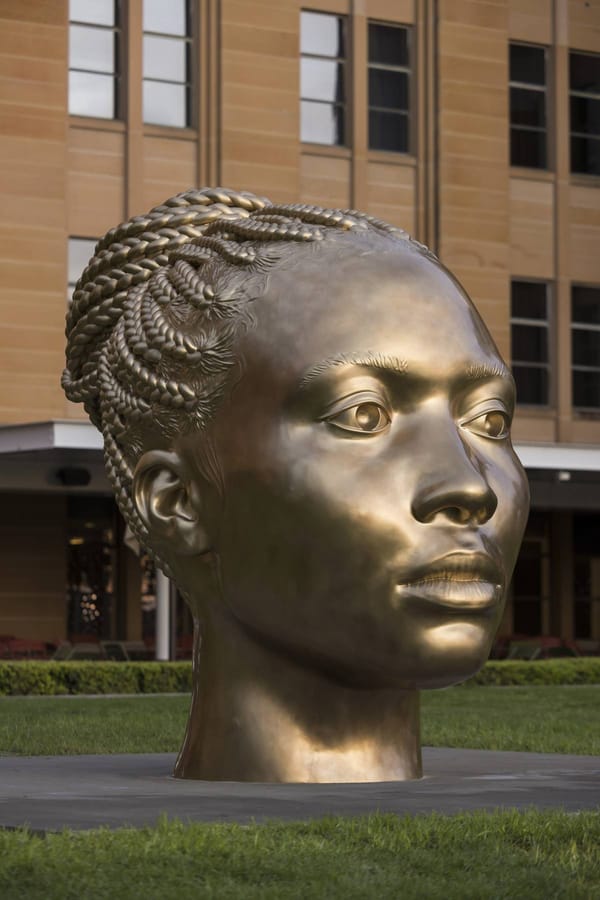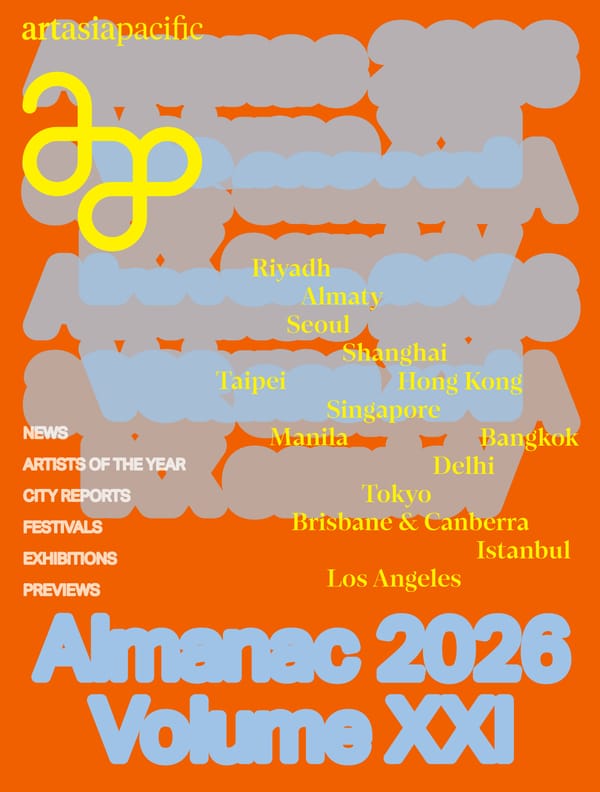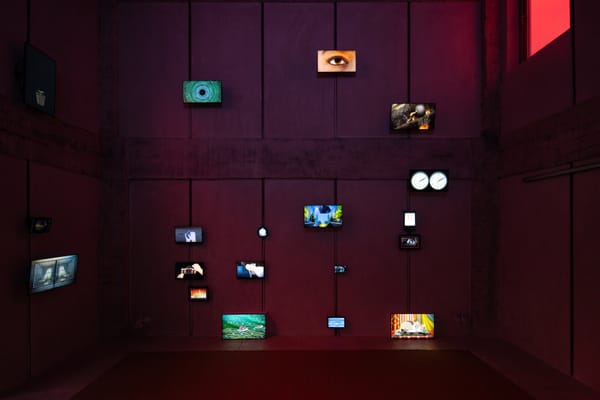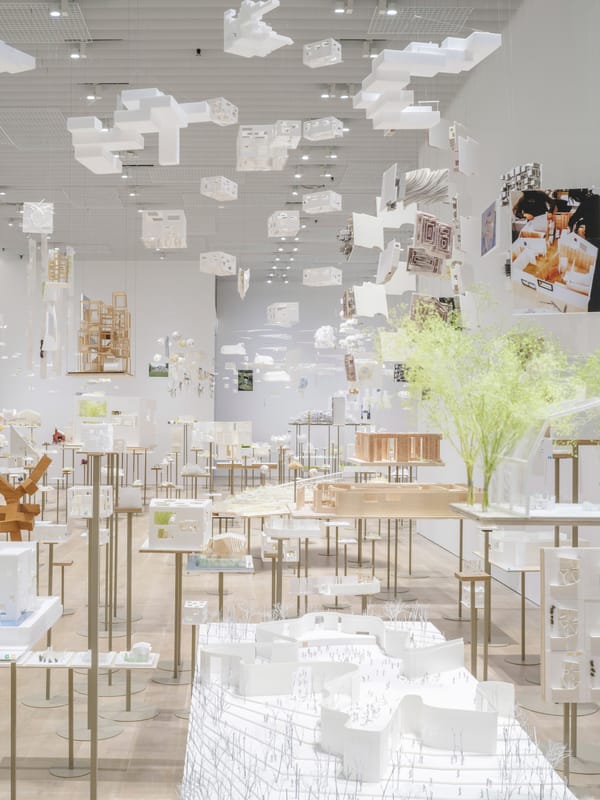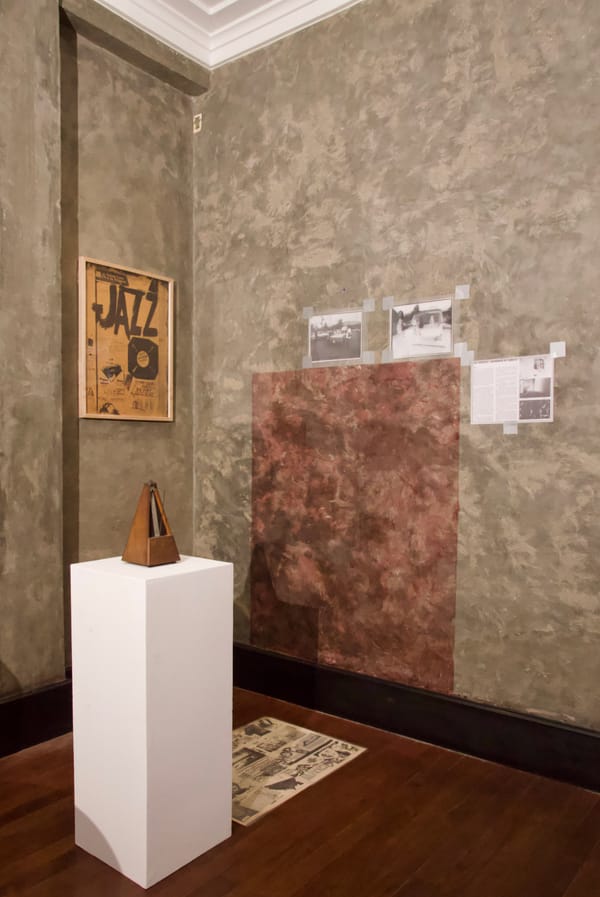Issue
Ranti Bam: My Works Have Soul
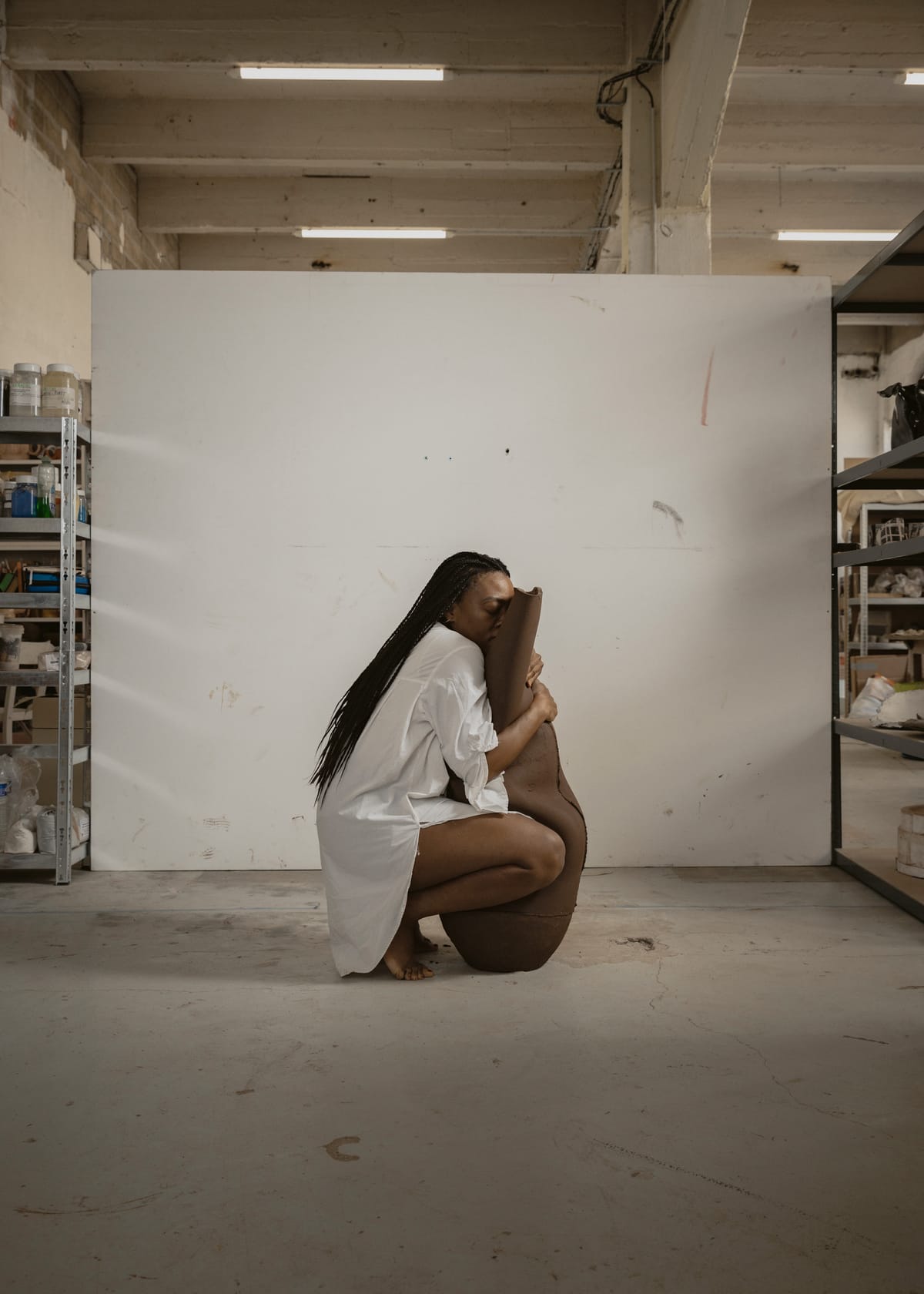
Each issue, ArtAsiaPacific presents a critical essay in collaboration with Burger Collection, a Hong Kong nonprofit that partners with many institutions to support contemporary art worldwide.
British Nigerian sculptor Ranti Bam works primarily with clay and her own body. Her objects resemble vibrantly painted vases, or abstract creatures with udder-like feet. Some are the height of small children—standing slightly askew, their hoods pulled low to conceal covert, watchful gazes. Another large series of works is titled Ifas. To create these sculptures, Ranti Bam takes warm, still moist clay in her arms, physically embracing it as her work takes form. Her approach differs from the postwar trope of action painting, which involved sensational happenings employing (mostly female) bodies as living brushes and sponges. In contrast, Ranti Bam’s work engages the body in a quieter, more spiritual manner. Her method integrates healing rituals, but with a goal that transcends mere superficial feelings of happiness or flow. Instead, her process emphasizes introspection, grounding, and sensitivity. In its associations with the womb, the vase symbolizes fertility and birth. There is the first birth—the physical emergence of life as a baby leaves the womb. Then, there is the second birth—not physical, but spiritual, when a person undergoes an inner transformation and is born anew. This second birth is also a vital process of life. “That I have been started is bearable if I learn to start myself. That is the second birth. The birth out of freedom,” wrote the philosopher Rüdiger Safrangski.1
